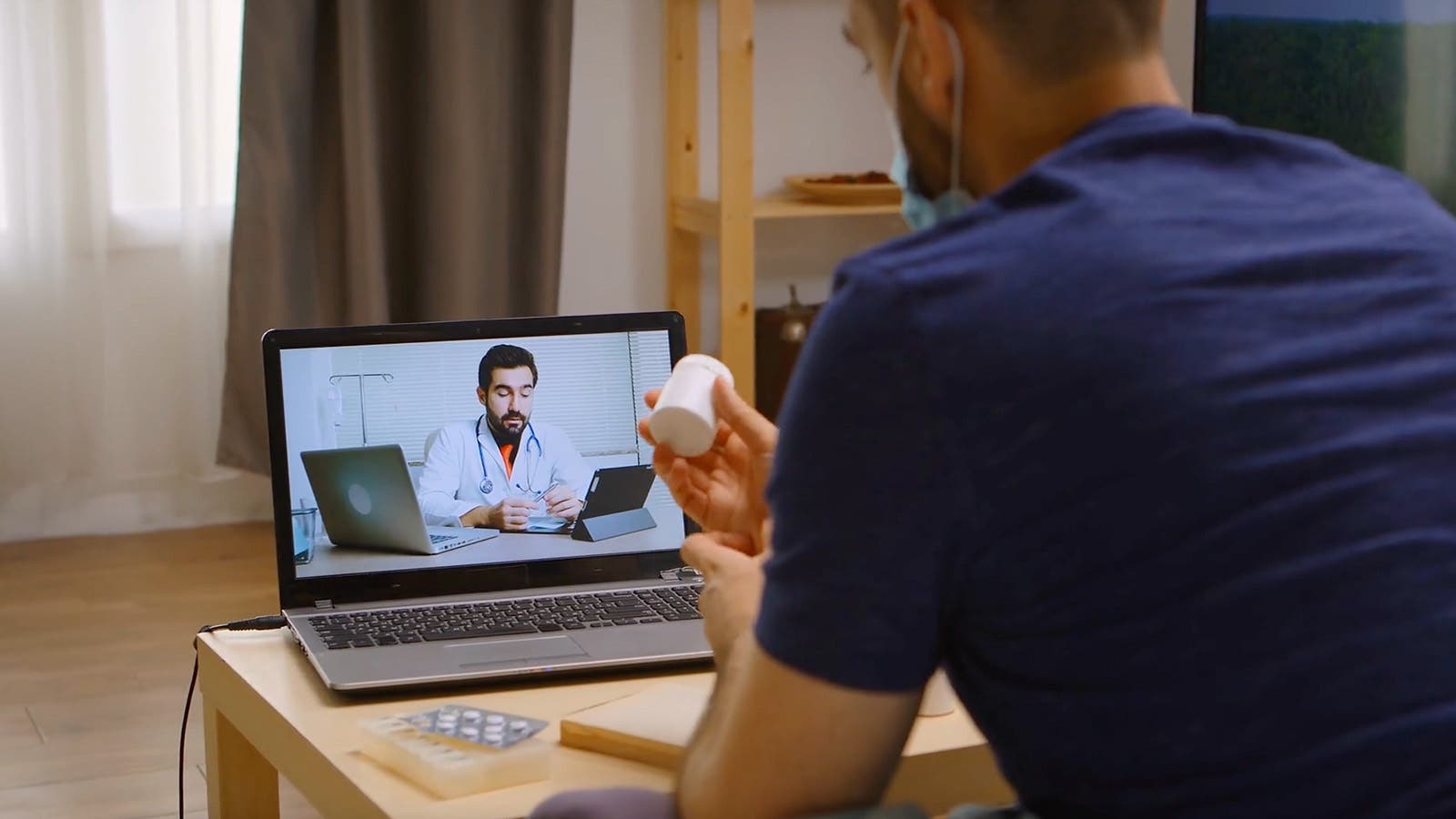— Founder of telehealth platform on making virtual exams accessible, profitable, and rewarding
by
Emily Hutto, Associate Video Producer
December 22, 2023
Telemedicine has become a means for patients to overcome numerous barriers to healthcare access. But challenges still exist, including technology, insurance coverage, comfort level, and regulatory compliance.
In this video interview, Brandon Welch, MS, PhD, founder and CEO of doxy.me, explains why telemedicine is so important in the post-pandemic world. He also offers advice for providers who may be considering incorporating telemedicine into their practice and gives five tips on how to be successful.
The following is a transcript of his remarks:
Telemedicine is a great tool to help address a lot of the accessibility issues in healthcare.
There’s a lot of areas where accessibility is hindered, and obviously the one that comes to mind first is distance or people who live in rural parts of the country. Eighty-six percent of the U.S. is considered rural. How do those people in those rural areas get access to care?
Another one is access to specialists. In my previous life I worked at a genetic counseling company, and there’s only 3,000 genetic counselors in the country, yet people live all over the place. How do people access that type of care? It’s through telemedicine. Even if you live in an urban area, if you don’t have a genetic counselor, you don’t have access to that specialist. Telemedicine could provide that.
Language is another thing. You could be a refugee from Syria who comes here and doesn’t speak English. You could be living in a very urban area, but if you don’t have somebody who speaks your language, you don’t have access to care. Telemedicine bringing in a translator or connecting you with a provider who speaks your language is a way of increasing access for language barriers.
Age — people who are older have a harder time getting around and moving. It can be challenging for them. And people who are older need more healthcare and they’re more likely to use healthcare, and it’s challenging. So telemedicine increases access for the elderly.
Same thing with the disabled. Ironically, folks who are disabled and elderly need healthcare the most, yet it’s the most challenging for them to access it because of their age or condition. Telemedicine makes it easier for them.
Then you get into other social issues like racial disparities, women’s health, stigma — people who have a condition and don’t feel comfortable being seen out in public with that condition or don’t want to be seen going to a certain provider because of certain stigma associated with the disease.
These are all things that increase disparities in healthcare due to accessing healthcare that telemedicine can overcome. Because, [in] all these examples, the patient can sit in their home and just connect to the doctor and receive the care without facing the challenges of going to a visit or facing those issues that I talked about.
In terms of insurance coverage, what was interesting is before COVID, that was the biggest challenge — getting insurance to cover telemedicine visits. You get some providers here and there covering it, but that was the biggest challenge and the biggest roadblock to telemedicine.
Once COVID hit, all those barriers [stopped] and insurance was like, “Yes, we will reimburse for telemedicine.” And they were reimbursing everything. I mean, physical therapists were getting reimbursed for doing physical therapy over telemedicine, something they never thought would ever happen, but they did it.
As COVID has waned and we’ve come back to the new normal — we never went back to what it was pre-COVID, but a new normal — the new working model where telemedicine is still a component. What was interesting is that telemedicine started to pull back reimbursement for certain types of care. In the example of physical therapy, they pulled back reimbursement for physical therapy. Nobody complained about it, so they don’t reimburse for physical therapy anymore. Not surprising because it’s typically an in-person thing.
What was interesting is that they tried to pull back reimbursement for things like mental and behavioral health, and they got a huge pushback and they were just like, “OK, we are not going to pull this back. We’re going to keep it.” It just shows the power of the people standing up and saying, “No, we need this. We want to use telemedicine for this type of care,” and the insurance providers had to listen. They couldn’t pull that back. Any place that people have pushed back and said, “No, you have to keep this,” they’ve listened.
And so that’s been a very telling experience for healthcare providers, patients, and insurance providers about what they will and won’t cover. It’s often the voice of the people who are dictating what is and isn’t, which is very nice to see.
For those who are branching into telemedicine, especially new providers who don’t have the COVID experience, I think the most important thing that a provider needs to know is that they need to listen to their patients. If you listen to the patients and you ask them what they want — with some patients, you talk to them and they’ll say, “I want to come in and I want to see you in person.” Great. But you’re going to talk to another group, and they’re going to say, “I don’t want to come in for every visit. I just want to do this by video. Because taking time off, finding a babysitter, taking time off of work, driving, parking, that’s way too much effort and I don’t want to do it. I’d rather just do it by video.”
Telemedicine isn’t a one-size silver bullet for every patient. You’re going to find some patients that prefer in-person and some that prefer video. I would encourage providers to continue to be adaptive and responsive to what their patients want and give them what they want. If you do that, you provide a great experience to your patients and your patients will be happier. You’ll probably have less no-shows and a much better experience for the patients.
I would encourage you to just talk to your patients, figure out what they want, and then deliver what they want.
Over the last couple years, I’ve seen telemedicine before the COVID pandemic and the challenges that providers faced and what they were trying to overcome, and then when COVID hit, a whole new set of challenges and how to adapt to it.
Over the years, I saw providers who were successful with it and those who tried it and weren’t successful with it and failed. That was always something that was interesting to me. As a researcher, I said, “What is the cause of this? What causes one person to be successful with telemedicine and another not to be?”
As we started to look into what caused certain people to be successful or not to be successful, we found that there were five main areas that a provider had to do to be successful with telemedicine.
The first was they had to be successful — so the provider had to be successful with it. That includes that it has to fit into their workflows, it has to be easy to use for them, it can’t cause burnout.
The second is that the patient had to be successful — so the patient had to want to do it. They had to desire to do it, it had to increase access like I talked about earlier, and it had to be a good experience for the patient.
The third thing is that the technology had to work and work well. Oftentimes, providers would sign up and do telemedicine, but they got the wrong technology for their use case and it wasn’t a good experience.
The fourth thing is that it had to be financially successful. Providers aren’t going to do this for free and they’re not going to lose money on it either. But there are certainly ways that providers can be financially successful with telemedicine, you just have to know how to do that.
And the last thing is, you have to be successful with the compliance, the laws, the regulations, and the rules out there — otherwise you can get into trouble.
As we looked at these five domains of success for telemedicine, my colleague, Dr. Joshi, and I compiled this into a book. That’s what this book, Telehealth Success, is all about — what it takes for providers to be successful with telehealth. It’s all distilled into that book.
-
![author['full_name']](https://clf1.medpagetoday.com/media/images/author/EmilyHutto_188.jpg)
Emily Hutto is an Associate Video Producer & Editor for MedPage Today. She is based in Manhattan.





